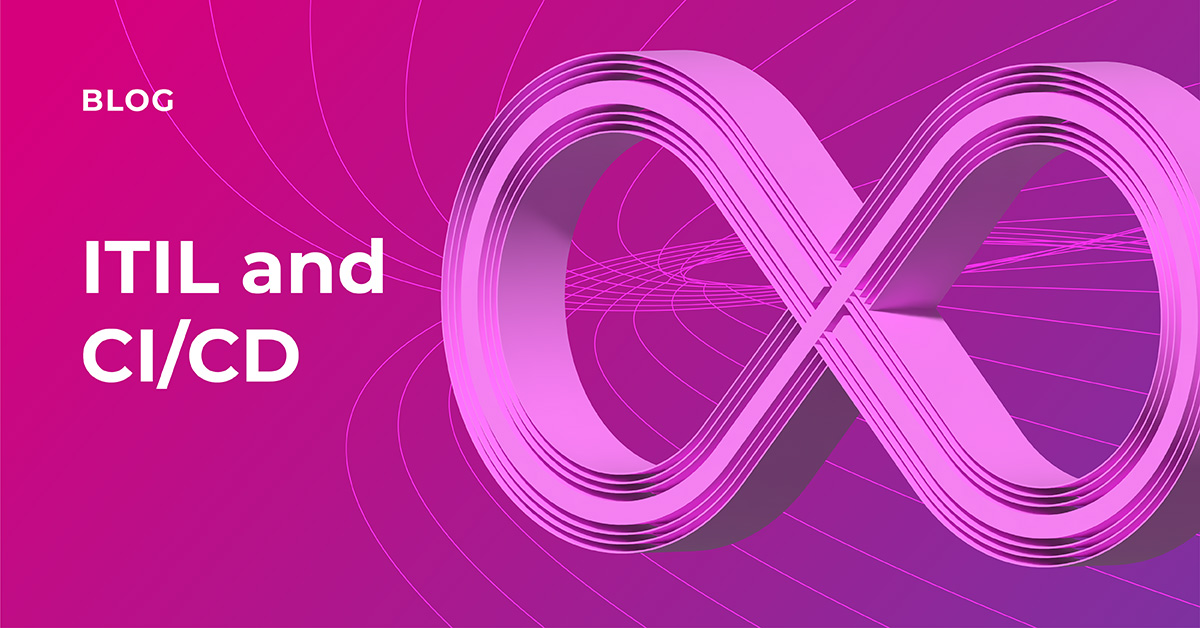CI/CD and IT Infrastructure Library (ITIL)

In the world of IT, there are two main approaches to managing changes—the information technology infrastructure library (ITIL) and continuous integration and continuous delivery/deployment (CI/CD). Both have their own benefits and drawbacks, so it’s important to understand the difference between them before deciding which one is right for your organization. In this article, learn about the difference between CI/CD and ITIL, and find out which approach is best for your needs.
The difference between CI/CD and ITIL
ITIL is a framework of best practices for IT service management. It includes guidance on everything from event management and incident response to change management.
The most recent version of ITIL (ITIL 4) places a greater emphasis on the business value of IT and DevOps principles such as automation and collaboration.
CI/CD is a methodology for automating the software delivery process. It involves frequent, small code changes and constant feedback to ensure that code is always production-ready.
In a nutshell, CI/CD focuses on automation and speed, while ITIL emphasizes control and stability.
Event management in ITIL
ITIL event management is a process for monitoring changes in state for business services. The purpose of event management is to reduce the number of incidents and problems and to enable faster resolution when they do occur.
Event management is a key part of service operation and is closely linked with other processes such as incident, problem and change management. By monitoring events, it is possible to identify potential incidents and problems early before they have a significant impact on the business.
Event management is typically performed by a dedicated team of event managers who are responsible for monitoring events and taking appropriate action. In larger organizations, there may be multiple teams of event managers, each responsible for monitoring different types of events.
Automation is an important part of event management, as it is not possible for humans to process the huge volume of events that take place on a company’s network every day. Event management software processes event information and detects issues, which helps to speed up resolution as well as system stability.
Lastly, event management has evolved over time from rules-based solutions to include artificial intelligence (AI) and machine learning (ML) in order to detect complex IT incidents and outages, identify their root causes, and point to resolution actions —a process called AIOps.
Change management in ITIL
In the ITIL 4 framework, change management is a process that helps organizations manage changes to their IT infrastructure. The goal of change management is to minimize the risk of disruptions to services and to ensure that changes are made in a controlled and consistent manner. Change management processes typically involve four steps: request for change (RFC), change review, change evaluation, and change approval.
- Request for change (RFC) – The first step in the ITIL change management process is the request for change (RFC). This is when a department or individual submits a request for a change to the IT infrastructure. The RFC should include a description of the proposed change, the reasons for the change, the timeline for the change and a business justification for the change.
- Change review – The second step in the ITIL change management process is the change review. The change manager will review the RFC to ensure that it is complete and accurate. The change manager will also determine if the proposed change is feasible and if it meets the organization’s standards for changes.
- Change evaluation – A committee is typically formed to evaluate the RFC. This committee will consider the impact of the proposed change on the organization. This includes the risks and benefits associated with the change. The committee will also determine if the proposed change is compatible with the organization’s current IT infrastructure.
- Change approval – The final step in the ITIL change management process is the change approval. The change manager will review the committee’s recommendations and make a decision on whether or not to approve the RFC. If the RFC is approved, the change manager will create a change plan that outlines how the change will be implemented.
CI/CD vs. change management
There are several key differences between CI/CD and change management:
- CI/CD is focused on automating the software development process while change management is focused on managing changes to the IT infrastructure.
- CI/CD does not require a formal approval process while change management does.
- CI/CD can be used to implement changes rapidly while change management is typically used to implement changes in a controlled and consistent manner.
- CI/CD does not always require a formal request for change (RFC) while change management always does.
- CI/CD is typically used to implement small changes while change management is typically used to implement larger changes.
Companies with roots in ITIL are often hesitant to adopt CI/CD because they feel it will jeopardize the control they have over their IT infrastructure. However, CI/CD can actually complement and improve the change management process by automating many of the tasks that are involved in implementing changes.
In summary, CI/CD and change management are two different approaches to managing changes to the IT infrastructure. By understanding the key differences between these two approaches, companies can decide which approach is best for their organization.
To learn more about BigPanda integrated with ServiceNow, click here.




